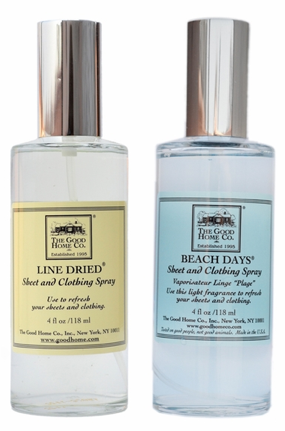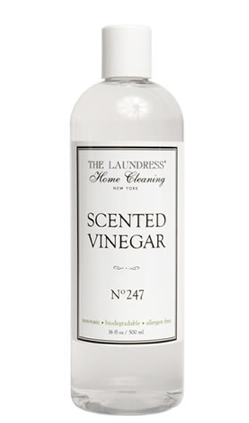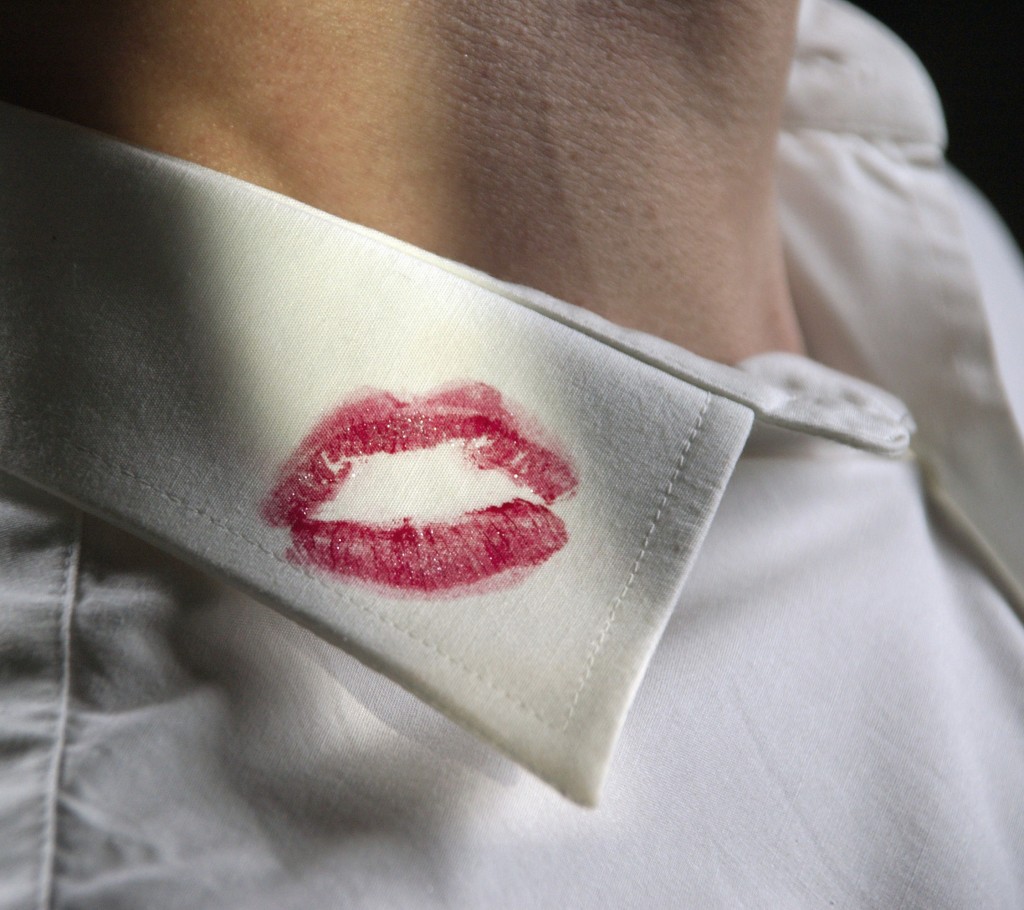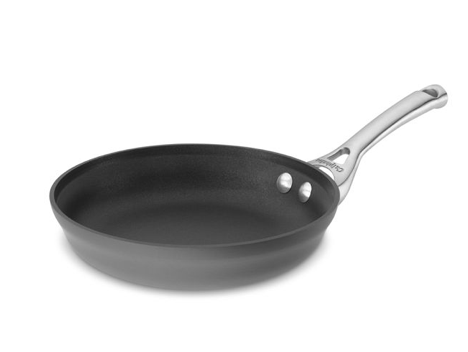I luckily discovered The Good Home Co.’s Sheet and Clothing Spray last month and am happy to reveal this is one product every WIFE should never be without! This spray is a more advanced, sophisticated and high quality version of Febreeze. Simply use this fragrant spray on sheets, pillow cases (try lavender as a natural sleep enhancer) to release a delightful scent through out your home. Also wonderful to refresh clothing as the formula won’t stain the most delicate fabrics.
Continue reading →
Entries Tagged 'Cleaning' ↓
The Domestic WIFE: Sheet Spray
February 7th, 2013 — Cleaning, Domestic Goddess, Eco Friendlly, Things I Love
10 Tips for THE WIFE: Cleaning with Vinegar
December 10th, 2012 — Cleaning, Domestic Goddess, Tips
This acidic wonder can wipe out tarnish, soap scum, mineral deposits, and more. Vinegar is all natural, non toxic and eco friendly. Among natural cleaners, it’s the clear champ. Distilled white vinegar creates an environment that inhibits the growth of mold, mildew, and some bacteria, such as E. coli and salmonella. However Vinegar smell can put you off using it all together, enter The Laundress’s Scented Vinegar is 100% natural vinegar combined with their home scent No247 (Beramot, thyme, lavendar, musk and ylang lyang) 16oz for $12.00 at TheLaundress.com. Continue reading below to learn how incorporate vinegar into your cleaning routine. – Taryn Cox for THE WIFE.
1. All Purpose Cleaner: Make your own green multi-purpose cleaner by dissolving one cup household ammonia, one cup white vinegar and 1/2 cup baking soda in one gallon of water. Pour some into a spray bottle and use it to clean around the kitchen, especially in greasy areas. Use it to scrub the bathtub or shower. Rinse with warm water. Also be sure to protect your hands with plastic gloves.
2. Windows: Wash all your windows and mirrors with a solution of two tablespoons vinegar and two cups water.
Tips for THE WIFE: Removing Lipstick Stains
February 21st, 2012 — Cleaning, The Husband, Tips
Whether you’ve just experienced a hot and heavy lip locking session with your husband or you’ve just given a friendly hug, lipstick can easily get onto the collar of your or your husbands shirt. No more smudges and pesky stains caused by lipstick as it can easily be removed by following any of the suggestions.
Sometimes the stains are not noticed right away which means the stain has time to set in, making it even more difficult to remove. However, if the lipstick stain is noticed once you get home, start by creating a plan of attack for the best results.
1. Out and About – If you are out when you notice the stain and don’t have the necessary equipment at your disposal, you can always dab, (not rub!) the stain with water. This should suffice until you get home.
2. Labels – Very important! Before moving on, read the care label of the shirt to see if the fabric calls for any special care or treatment, or if certain products should be avoided. Many shirts require special treatment such as dry clean, you may need to take the item directly to the professional.
3. Stain Removers – Because lipstick is a grease-based cosmetic, it is recommended to use a prewash stain remover before washing or rinsing the shirt. Apply a prewash stain remover and rinse in warm water. Do not rub, as rubbing may worsen the stain and can make it more grounded. Blot or dab the stain with the stain remover by using a white cloth. If the stain still isn’t out, apply a liquid detergent and rinse again in warm water.
4. Dish Washing Detergent – Another home remedy is dishwashing detergent such as Sunlight and Dawn, both formulated to fight grease. For this method of lipstick stain removal, dab on a little detergent, let it set for about 10 minutes, and then gently begin working on the stain from the outside edges inward.
10 Tips for THE WIFE: Cleaning and Storing Winter Furs
February 6th, 2012 — Cleaning, Dress Up, Tips
A fur coat is no impulse purchase. It is also not a wash and wear garment that you can clean quickly at the neighborhood dry cleaner. Fur coats are decadent and expensive luxury fabrics that have specific instructions for their meticulous cleaning and maintenance regimen. For fur coat connoisseurs who wish to clean their suitably stylish coats, use these tips to rid your coat from dust and grime and restore your fur to its original soft and fluffy texture.
- Clean your fur coat once a year. Perfumes, perspiration and spilled liquids can damage fur, so plan to clean your fur pieces annually. Before you store your fur in a temperature-controlled environment, have it cleaned and repaired.
- Never use sprays or cleaning fluids on your fur. Have them professionally cleaned each year to insure many years of enjoyment.
- Find a professional furrier with a cleaning service. Not all furriers are alike. Some furriers create an in-house cleaning facility that cleans furs onsite. Others may send their furs coats off to an independent company that specializes in cleaning and glazing. Ask your furrier to explain their cleaning process in detail to select the best vendor to clean your fur coats.
- Understand the fur cleaning and conditioning process. Unlike wool, silk or cloth, which is cleaned by immersion, the abrasion method is used to clean fur. The furrier prepares a drum filled with sawdust and a chemical solution. The fur technician places the fur coat into the drum. The garment is tumbled repeatedly to remove all dirt, oils and odors. A glazing solution is then applied to the fur to add sheen and restore the soft and fluffy texture
- Determine if your fur coat requires special services. Light-colored and white furs require special attention. Ermines, foxes, white minks and chinchillas may yellow due to sunlight. Your furrier will add a special whitening agent to restore the fur back to its original color.
- If your fur gets wet, shake it out and hang it to dry in a well-ventilated room. Keep it away from direct heater or radiator, which can cause both fur and leather to dry out. After it is dry, shake it again. Most furs will take some rain and snow far better than wool or either a winter coat will. If the fur is soaked through, however take it immediately to your fur retailer for proper treatment. Never brush or rub away the excess water.
- Always hang your fur on a broad-shouldered hanger never on a wire hanger. Give your fur enough room in the closet so the fur is not crushed. Avoid leaving a fur hanging in a bright place. The light can cause the fur to oxidize or change color.
- Never store your fur in a plastic bag where air cannot circulate. Furs like to breathe. Plastic prevents air from circulating and can dry out the leather when traveling, store your fur in a cloth garment bag provided by your furrier.
- Never attempt to mothproof a fur yourself. Home treatments are no substitute for professional cleaning and storage.
- Try not to rub the fur with handbags as it can cause wear spots. Never pin jewelry on your fur. Also avoid spraying perfume or hairspray onto your fur. – Taryn Cox for THE WIFE/eHow.Com
WIFE Tip: Replacing Teflon Pans
November 20th, 2011 — Cleaning, Cooking, Domestic Goddess, Uncategorized
If your on of those wives who love their non stick pans, reading the article below might sway you to switch them out for a healthier cooking alternative. Or if you cannot part with them at all, here are some tips to keeping them in tip top condition.
Health Concerns: Teflon contains highly toxic chemicals that may be released into your foods when the pan becomes scorched or starts to peel. The chemicals that manufacturers use to create the seemingly magic lining of nonstick cookware could end up damaging your liver or thyroid, or messing with your immune system. Reduce the risk of endocrine- and immune-system damage by ditching Teflon and other cookware made with fluoropolymers and fluorinated telomers. When replacing your pots and pans coated in Teflon, you should consider replacing them with cast iron or stainless steel cookware.
Replacing: If you must keep your teflon pots and pans replace them every two to three years or sooner if they have burned or the coating has begun to peel. This will depend on the wear of the pan, which can be determined by how well you have cared for it.












